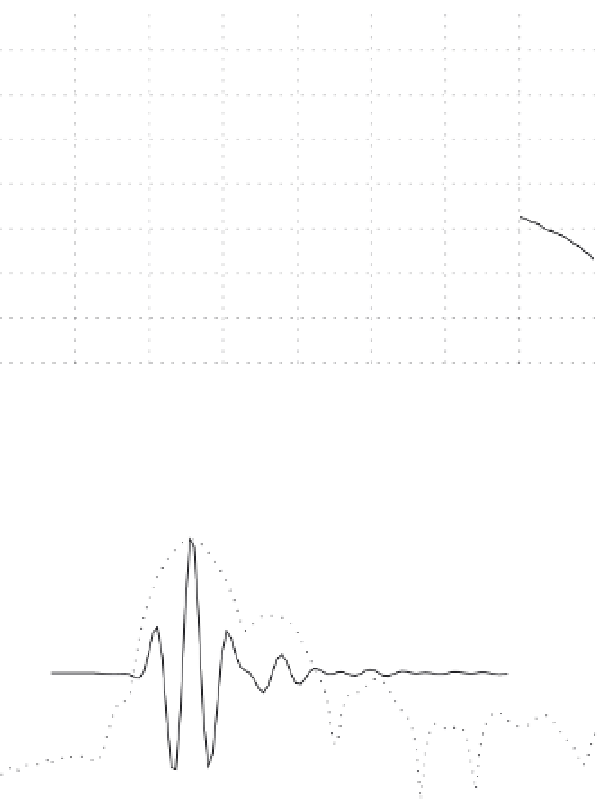Biomedical Engineering Reference
In-Depth Information
Spectral Magnitude:
6dB %BW 61.21%
6dB Fc 3.174 MHz
6dB F low 2.202 MHz
6dB F high 4.145 MHz
Spectrum Max. 47.03 dB
0
10
20
30
40
50
60
70
0
1
2
3
4
5
6
7
8
Frequency (Hz)
x 10
6
Pulse Envelope:
Pk 9.697 dB
6dB ENV PL 0.4635
sec
10dB ENV PL 0.6182
μ
sec
20dB ENV PL 1.292
μ
sec
30dB ENV PL 1.55
μ
0
10
sec
40dB ENV PL 3.69
μ
sec
μ
20
30
40
50
60
70
0
1
2
3
4
5
Time (sec)
x 10
6
FIGURE 16.12
(Top) Transducer response spectral magnitude and -6 dB bandwidth dB. (Bottom) Transducer
impulse response and its envelope measured in pulse-widths in dB.
Transducer Types and Arrays
Most imaging systems use arrays rather than single-crystal transducers. A one-
dimensional array is an in-line arrangement of transducers called elements that are address-
able individually or in small groups. The elements are spaced at regular intervals, typically
one-half to two wavelengths apart in water (Figure 16.13). The key advantages of arrays
are that they can be rapidly focused and steered electronically or electrically switched,
whereas a strictly mechanical single transducer has a fixed focal length and can only be








































































